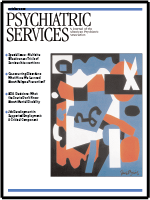Late-Life Depression
Depression is one of the significant causes of morbidity and mortality among older people and consumes an increasing share of health care resources. This illness has a particularly devastating impact on elderly persons because it is often underdiagnosed and, in many cases, is inadequately treated. Depression not only has a profound effect on the quality of life but also is associated with an increased risk of mortality from suicide and vascular disease. Practicing geriatric psychiatrists understand what a difficult task it is to treat depression in this population.
Late-Life Depression is an up-to-date book that helps illuminate the deleterious relationship between depression in late life and other illnesses. This book is targeted to psychiatrists and other health professionals who work with older adults and have to deal with the rapid expansion of scientific knowledge about aging.
Late-Life Depression is devoted to the epidemiology, phenomenology, psychobiology, and consequences of late-life depression and describes current attitudes to treatment. The contributors to this book point out that the current DSM criteria have not been modified to reflect the clinical features unique to the depressed elderly, who tend to report more somatic and cognitive symptoms than affective symptoms. Neurocognitive presentation of depression among elderly individuals who are experiencing forgetfulness and distractability is a part of the phenomenology of depression. Depression may also play a role in the development of vascular disease. Elevations in the hypothalamic-pituitary-adrenal axis play an integral role in the expression and outcome of depression as well as in comorbid diseases among the elderly. Subclinical endocrinopathies—for example, mild testosterone deficiency—are etiologically important in the development of subthreshold neuropsychiatric problems.
Suicide is more frequent among elderly persons than in any other population. Suicide in later life is a significant public health problem that in the coming decades is likely to account for an even larger number of deaths. Substance use and abuse in late life are also currently growing public health issues.
Age-associated pharmacodynamic changes result in higher and more variable drug concentrations in the elderly. Older patients also take longer to respond to antidepressants and require extended treatment trials. These medications are also associated with a higher rate of side effects. Selective serotonin reuptake inhibitors are the most frequently prescribed, and elderly persons are more likely than younger individuals to experience adverse events due to antidepressants. Atypical antipsychotics are preferred over conventional agents for elderly patients who have psychotic disorders.
The authors show that late-life depression is an entity that is meaningfully distinct from depression among younger adults and presents distinct clinical challenges in terms of assessment, treatment optimization, and the frequency and management of side effects. The care of the patient with late-life depression must address different issues and needs from those encountered in the treatment of younger adults, and Late-Life Depression will be a helpful aid for psychiatrists treating late-life depression.
Dr. Sheikman lives in Shrewsbury, Massachusetts.



